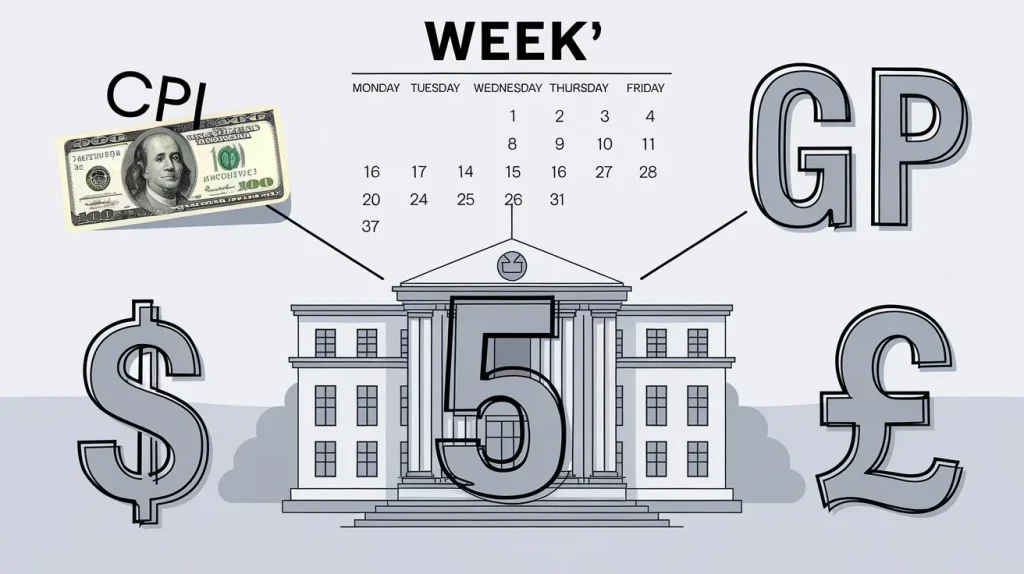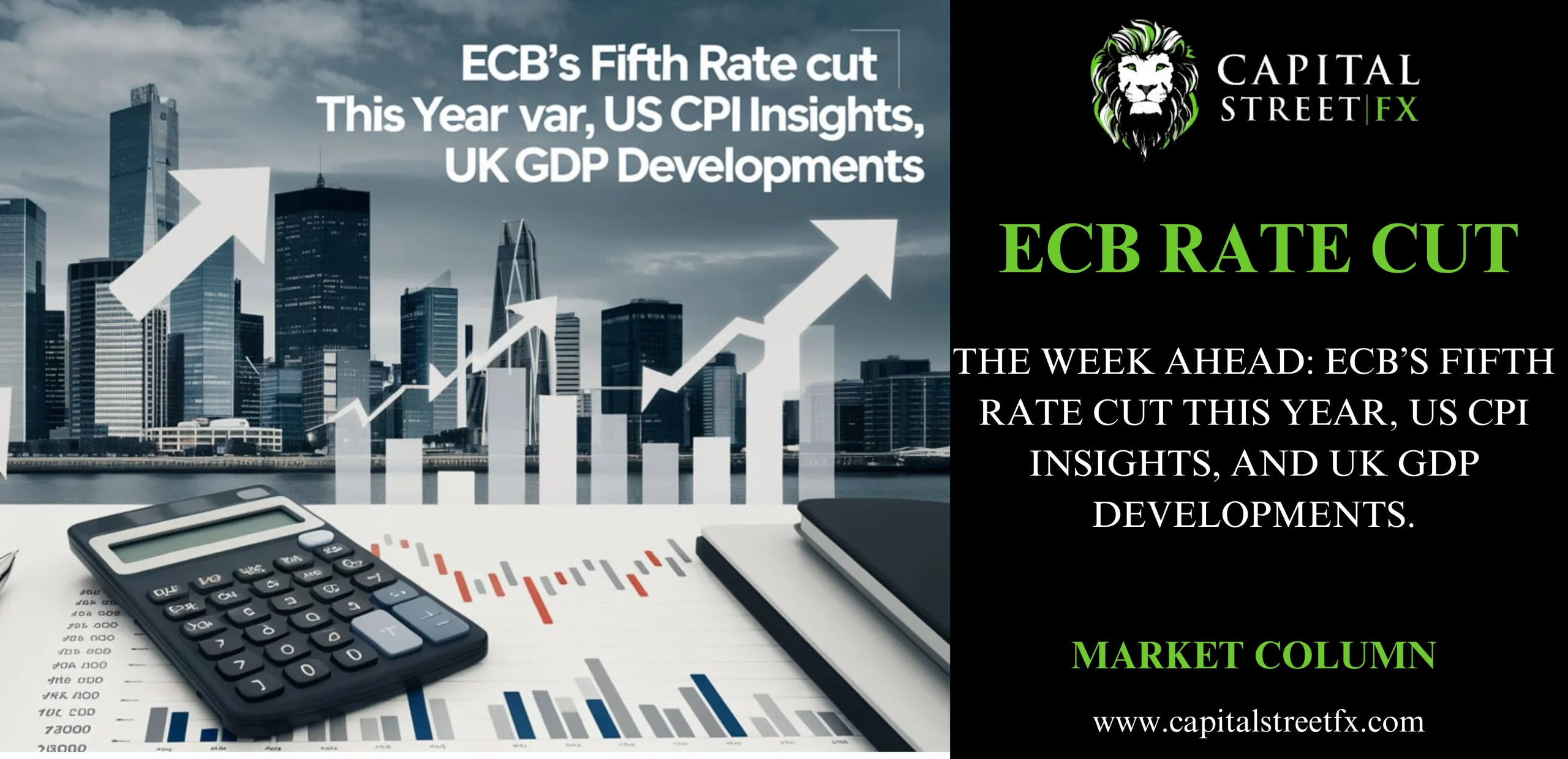The Week Ahead: ECB’s Fifth Rate Cut This Year, US CPI Insights, and UK GDP Developments

ECB Monetary Policy Decision (December)
As European Central Bank President Christine Lagarde surveys the turbulent economic landscape of Europe’s two principal economies, France and Germany, the challenges before her are nothing short of monumental. With Mario Draghi’s sobering assessment of Europe’s precarious condition freshly published, Lagarde must contend with manufacturing stagnation amidst a storm of political discord. While Draghi’s conclusions aptly diagnose the economic malaise, the ECB’s toolkit seems insufficient to counteract the deep-seated issues, particularly when discord among policymakers obstructs meaningful reform.
Europe’s economic woes stem from entrenched misjudgments, including energy policy blunders under Angela Merkel’s leadership—such as the abandonment of nuclear power in favor of Russian gas reliance. Since June, the ECB has pared its key refinancing rate from 4.5% to 3.4%, yet the desired economic revival remains elusive. With inflation now nearing its target and export-dependent sectors grappling with diminished demand, speculation abounds over an imminent rate cut in December. Debate persists over whether the cut will be 25 basis points, as widely anticipated, or a bolder 50 basis points, hinted at by hawkish ECB member Martins Kazaks. Nonetheless, even an aggressive cut may yield limited long-term effects, given the region’s self-inflicted energy pricing distortions and the looming elections in Germany and France. Any relief brought by reduced borrowing costs is likely to be ephemeral in such a fractious environment.
US CPI Data (November)
Following a robust employment recovery in November—bolstered by 227,000 new jobs after disruptions in October—attention now pivots to US inflation metrics. The Federal Reserve faces mounting deliberations about whether another rate reduction is warranted during this festive season. Unemployment, currently at 4.2%, stands below the Fed’s year-end benchmark of 4.4%, while jobless claims have plunged to a seven-month nadir.
Price pressures are showing renewed vigor, with October’s Consumer Price Index edging upwards to 2.6% from 2.4%, and November’s headline CPI is projected to climb to 2.7%. Complicating the outlook is lingering uncertainty about the inflationary trajectory in the lead-up to a possible Trump presidency in 2025. Against this complex backdrop, questions persist about the necessity of further rate adjustments, especially as the US economy demonstrates resilience in key areas.
Daily Technical Analysis – Fundamental And Technical Analysis
UK GDP Figures (October)
The UK economy remains beleaguered by stagnation, exacerbated by political missteps and eroding confidence in governance. Since summer, economic momentum has faltered, with September recording a -0.1% contraction. October’s budgetary revisions, although yet to fully materialize in economic metrics, have already unsettled investment sentiment.
Manufacturing has slid into decline, and the services sector—previously a bastion of stability—is now faltering. Despite hopes for a 0.2% GDP rebound, the risk of another negative print looms large, reminiscent of the economic shockwaves following the 2022 “Truss budget.” Should the economy shrink for a second consecutive month, it would underscore the damaging influence of the new administration’s policies, which, critics argue, have dampened growth potential while compounding the country’s fiscal challenges.
GameStop Q3 FY25
GameStop’s tumultuous journey regained prominence this year as Keith Gill, also known as “Roaring Kitty,” returned to social media, reigniting interest in the retailer’s stock. The volatility recalls the frenetic trading of 2021, where the stock soared from $3 to $120 before stabilizing post a 4:1 stock split in July 2022.
Despite the stock’s rollercoaster movements, the company continues grappling with profitability challenges. Its ill-fated ventures into crypto (via the collapsed FTX exchange) and NFTs coincided with adverse market conditions, exacerbating financial woes. After touching a three-year low of $10 in April, shares rebounded, briefly reaching $64 but have since fluctuated between $20 and $32. For Q2, revenue plummeted to $798 million, down from $1.16 billion, yet a modest profit of 4 cents per share offset losses, narrowing half-year deficits to $17.5 million. In Q3, analysts expect GameStop to hover around break-even, with diminished revenue expectations casting a shadow over its fiscal ambitions.
Open Live Account With Capital Street FX
Broadcom Q4 FY24
Broadcom’s meteoric ascent has been one of the semiconductor industry’s standout narratives, with its stock surging from $60 at the start of 2023 to a peak of $186. The acquisition of VMware and its AI-driven growth spurred this success. However, most of Broadcom’s revenue still originates from its semiconductor segment, which generated $7.27 billion in Q3.
For the fourth quarter, Broadcom anticipates a 51% year-on-year revenue increase to $14 billion. Nevertheless, profitability faces pressure from a one-off $4.5 billion tax provision linked to intellectual property transfers, which resulted in a Q3 loss of $1.88 billion. Despite these hurdles, Q4 earnings are projected at $1.39 per share, signaling steady growth as Broadcom navigates the ever-evolving tech landscape.

